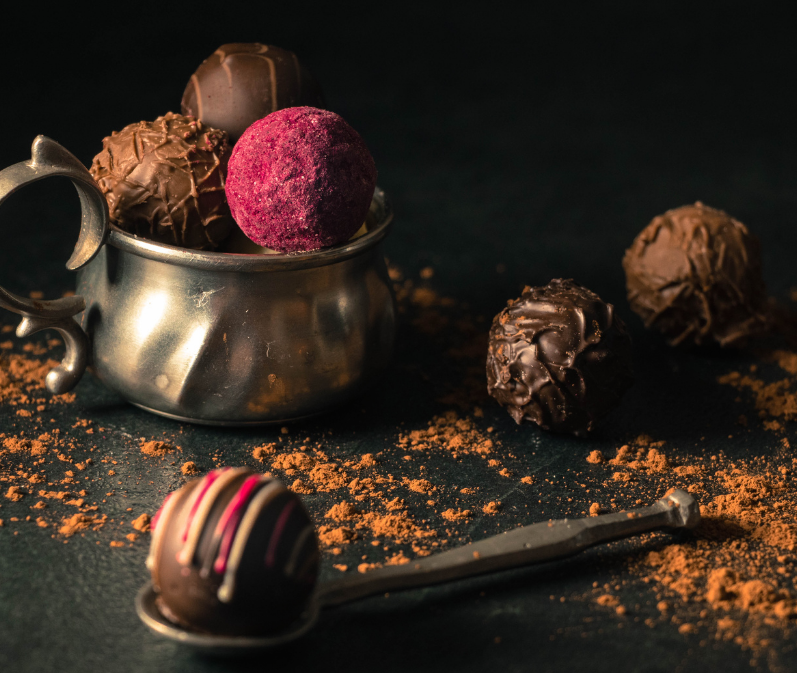Chocolate has been used for medicinal purposes since the 1500s. And it was used in foods and beverages for a thousand years before that.
While all chocolate is not created equal, some chocolate types can be good for your heart.
According to Katherine Zeratsky, R.D., L.D., of the Mayo Clinic, chocolate and its main ingredient, cocoa, appear to reduce heart disease risk factors. Flavanols in cocoa beans have antioxidant effects that reduce cell damage implicated in heart disease. Flavanols — more prevalent in dark chocolate than in milk chocolate — may also help lower blood pressure and improve vascular function.
Cocoa contains more phenolic antioxidants than most foods. Other anti-inflammatory effects may directly influence insulin resistance and, in turn, reduce the risk for diabetes. A medical journal for the National Center for Biotechnology Information reports these findings and further states that cocoa consumption may also:
- Stimulate signaling pathways involved in gene expression and the immune response
- Protect nerves from injury and inflammation
- Protect the skin from oxidative damage from UV radiation in topical preparations
- Have beneficial effects on satiety, cognitive function, and mood
Some research has also linked chocolate consumption to reduced risks of diabetes, stroke, and heart attack. But more research is needed to confirm these results.
Americans spend about $22 billion a year on chocolate, with the average person eating about 12 pounds per year.
Is that too much chocolate? Well, that depends mainly on the type of chocolate you’re eating.
Most chocolate falls into one of three categories: milk chocolate, dark chocolate, or white chocolate. The proportion of cocoa solids made from cocoa beans determines chocolate’s darkness, the “percent cacao” on the wrapper. Cacao is the raw form of chocolate, while cocoa is the heated version of cacao. It’s then mixed with cocoa butter and sugar.
Percent Cacao:
- Milk chocolate contains about 10 percent
- Dark chocolate contains a minimum of 35 percent
- White chocolate contains only cocoa butter – no cocoa solids – combined with sugar and other ingredients
The amount of cocoa solids in dark chocolate is essential because it can indicate those all-important dietary flavonoids. According to the Heart Association, dark chocolate would be the healthy choice because it typically has far less sugar than milk chocolate.
A standard bar of dark chocolate with 70 percent to 85 percent cacao contains about 600 calories and 24 grams of sugar. Milk chocolate contains roughly the same number of calories but twice the sugar.
Most commercial chocolate has ingredients that add fat, sugar, and calories. Too much chocolate can contribute to weight gain, a risk factor for high blood pressure, heart disease, and diabetes.
So, if you want to keep chocolate in your diet, do so in moderation.
Try this recipe for No-Bake Brownies, adapted from Peace of Cake, The Secret to an Anti-Inflammatory Diet, by Jenny Carr.
No-Bake Brownies (gluten-free and vegan)
Ingredients:
- 16 large Medjool Dates, pits removed
- 1 Cup Raw Cacao
- 3 Cups Raw Walnuts
- 1 tsp Vanilla
- 1/2 tsp Salt
- Water, as needed
Place all ingredients, except water, in a food processor and process until completely ground and a ball starts to form. Dribble in water, one tablespoon at a time, until a smooth, stiff consistency is achieved (about 2 Tablespoons). Process longer and add more water for a fudgy texture and less for a crunchier brownie. Press the dough into an 8×8 or 9×9 cake pan and chill for several hours. Enjoy!





Add Comment